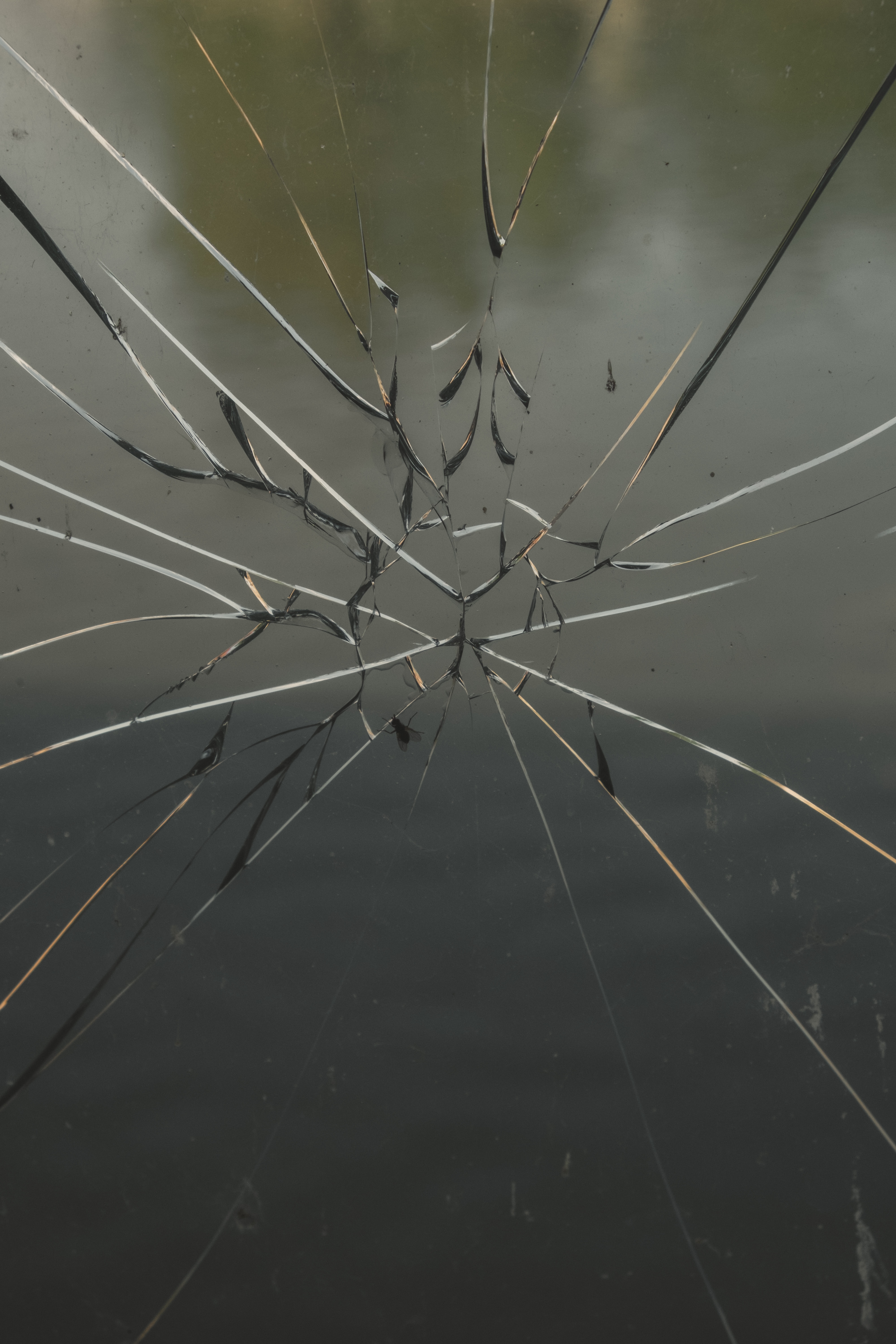CW: Injury. This post is about getting hurt. I’m trying not to be too lurid about it, but there’s some frank discussion of (non-serious) real-life injury in here, so if that bothers you, you might want to give this one a pass.
I had an unpleasant and ignominious experience while helping my wife at a craft show this weekend. I was walking down a shallow slope toward the parking lot where we were setting up her display when I stepped wrong, stumbled for a step or two, then lost balance entirely and fell forward and hard onto the blacktop.
It is important to note at this point that I did not break anything, didn’t hit my head at all, was able to stand up pretty quickly once people stopped crowding me and actually gave me the space to move my limbs, was able to clean and bandage the injuries I sustained myself, etc. (Though because I went down on a blacktop parking lot, I wound up having to use Dawn to clean my scrapes because of the parking lot sealant, which didn’t exactly feel great.) I am also in my early forties and in pretty good health overall. I might have a new scar or two, but this was not a life-altering incident. In short, this was not a pleasant experience, but it also wasn’t a traumatic one, and so in an effort to get something other than embarrassment and soreness out of it, I’m going to write about it this week. The point is: I am banged up, but okay.
However, this isn’t a plea for sympathy. To use a gaming analogy, I am fortunate not to have Constitution as one of my “dump stats” in real life. I’ll probably be mostly back to normal in a week.
In much happier news, I had a birthday recently. (41 trips around the sun completed!) And one of the gifts that I received for it was a copy of Wonderbook by Jeff VanderMeer. It’s a well-regarded book about writing speculative fiction such as sci-fi, fantasy, and horror, and VanderMeer is a bestselling author in his own right (having penned the Southern Reach trilogy). I first heard about it from Monte Cook in his recent book Your Best Game Ever, and I can see why Cook enjoyed it so much; if you’re into writing yourself, it is definitely something I’d recommend getting. And I say this only just having barely started chapter 2.
In any case, the first chapter of the book is largely about how to get ideas and inspiration; how to properly cultivate a writer’s imagination and why you should. This is one of those things that people often ask writers about and often don’t get a very good answer to. One of the things that makes the book so good is that it finally has some good answers to that question. To summarize, a lot of the first chapter of Wonderbook is essentially making the point that virtually anything (or perhaps even virtually everything) can be good inspiration for creative projects like writing. One just needs to kind of look at things through a creative filter.
So what can we take from my swift introduction to an asphalt parking lot this weekend? Because if I can pull some useful creative nuggets out of this, the scrapes and bruises will be a bit more worthwhile.
First, some additional detail, because we’re doing analysis here (this is probably where the content warning at the top of the post becomes especially relevant): I fell from a slightly-inclined grassy surface off of a 4″ curb onto a blacktop parking lot. I was moving at a brisk walking pace at the time, so I had some forward momentum and I wasn’t immediately stopped like I might have been if I’d snagged my foot on a tripwire or tree branch. When I came to a rest, I had skinned my right forearm from just below my elbow to just past the halfway point to my wrist, skinned a chunk of the heel of my left hand, skinned the inside corner of my right knee, and pulled some muscles in the front of my left thigh. My watch band (on my left wrist) had also popped open just like if I’d opened it manually.
In addition, I dropped the pop bottle I had in my left hand, but closed my hand around the carabiner I had in my right, which probably was why I came down on my forearm on that side rather than my hand. (This also likely spared my right wrist from injury, which is good – it’s been poppy and clicky since the late days of my B&N career.)
As the day went on, I found a few other places where damage had occurred to my possessions. I had some minor scratches to my wedding ring and the pocket clip of my multitool, the two lowest buttons on the front of my shirt were scraped and stained (but the shirt itself, the sleeves rolled up to above my elbows, escaped any tearing). I had a tear over my left thigh pocked on my jeans, probably from my keys or phone, both of which also escaped unscathed.
Okay, so what are the take-aways for gaming or writing after examining that?
The first take-away for me is more of a “life” one: that this is a good reminder to be kind to people with chronic illness and pain. As I mentioned earlier, I should heal up pretty nicely in the next week or two. I know people dealing with things like fibromyalgia, lupus, arthritis, bad hips, backs, and knees, and so on that are much more long-term and severe sources of pain than one ill-fated moment of clumsiness on my part. Hurting sucks. Pain is tiring. Be kind to people who have it all the time. Just the passive state of being sore takes a surprising amount of energy, and it’s easy to forget that when you aren’t feeling it yourself.
The next obvious take-away for me is that wound penalty systems that are used in a lot of games are a decent way of modeling actual injury. Even after that fall, I was able to limp a couple of blocks to the chamber of commerce (who were putting the show on) offices, wash my injuries, and bandage them up, then come back and help my wife like I normally would, albeit somewhat more awkwardly and at a slower pace. One thing that I find interesting is that last part – I still knew what I was doing, but the soreness had me moving slower. I wasn’t necessarily any worse at the normal tasks I was performing, but they took extra time. That might be a useful insight for game design – if you’re lightly injured, you can get rid of the penalty to an action you already know how to do by spending 50% longer doing it.
That knowledge comes with another piece in tow, though: I’m not sure how much fun it is to simulate what actually being banged up in real life is like in a game system. There’s also a decent amount of “injury maintenance” that I’ve had to do – changing bandages and such. While if you really want realism, that’s probably all good to keep in mind, I find this experience makes me more appreciative of simple hit point systems, not less.
This is particularly true because it isn’t hard to see how even relatively minor injuries in a high-stakes environment can easily turn into a failure spiral as you defend yourself/escape less competently and get more and more beaten up.
In fact, I think the way a system models injury is probably one of the most important things to get right if you want to achieve a specific feel. Stacking wound penalties make getting even non-seriously hurt pretty bad, regardless of what else is in the world. This in turn makes for a system (which implies a world) where nobody can shrug off injury of more than the most superficial varieties. A “flesh wound” from an actual weapon, while possibly not life threatening, will introduce enough pain, stiffness, blood loss, and/or fatigue to have an immediate impact on the affected character’s performance.
A middle ground, should you want one, between being able to shrug off everything until you’re knocked unconscious like in D&D or limping from one bad fall like me on Saturday might be to apply some of whatever penalty you get for being tired to characters that are starting to get banged up. So for example in 5e D&D, maybe a level of exhaustion after you’re down to 50% of your HP and another at 25%. I don’t know that I myself want to do this because, again, it creates a failure spiral (and in D&D, that can easily become a full on death spiral) but it’s an option.
One thing I find particularly creatively-useful in this is that the same incident can cause injury and damage across an affected individual’s body, and that it’s not always symmetrical or even equal in severity. In addition, it can leave surprising areas untouched. Nothing at all happened to my left knee, for example. This is something we all experience from time to time, but it bears repeating because we humans are full of moving parts and everything is connected. I haven’t had a “wipeout” fall like this in probably at least 30 years. And while I hope I don’t have another one for at least that long, I might as well put the info to use while it’s fresh.
The asymmetrical and spread out nature of injuries from an accidental source can make for some interesting mystery fodder, especially with some additional research applied. This kind of falls under the old “this body washed up from the ocean, but the water in its lungs is chlorinated” trope – perhaps the PCs investigate an apparent death by car accident, but the victim has a small patch of some incongruous injury on them somewhere. And the other thing this brings to mind is that it seems like accidental damage is often less localized and sloppier than that caused by deliberate violence. Not always, of course – we’ve all had the experience of stubbing just one toe, but a person who actually fell down stairs or actually walked into a cabinet door will look different than someone who’s been beaten up.
Hopefully I don’t get my particular inspiration for a blog post from such an unpleasant source again for quite a while. But it has been interesting and a bit cathartic to strain this experience through a filter of creativity.
I guess I can add “mild analgesic effect” to the benefits of gamer goggles.
Photo by Thomas Dumortier on Unsplash




